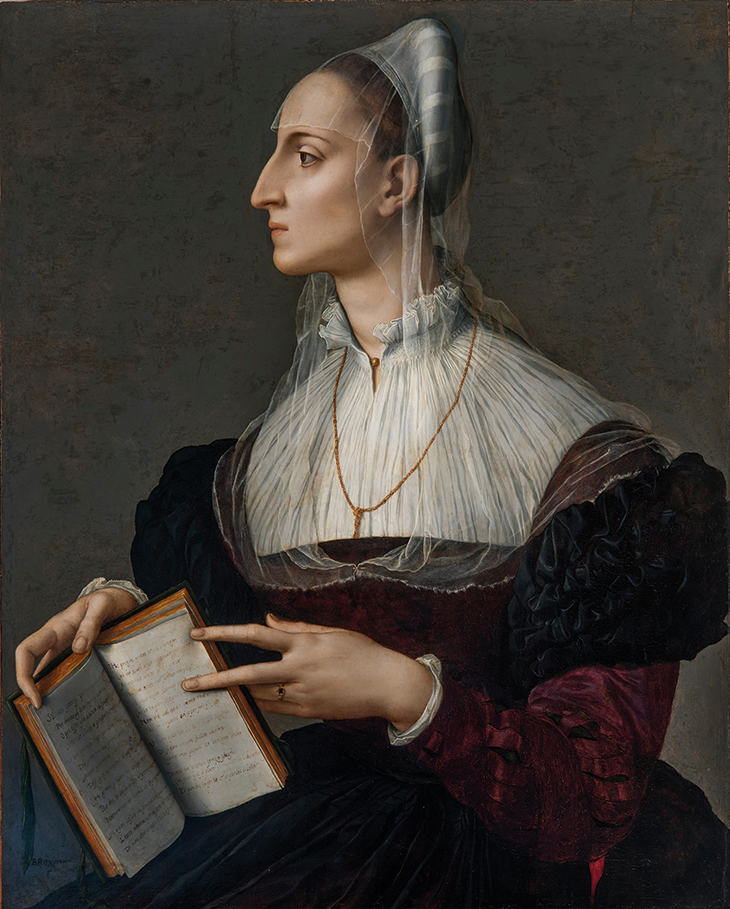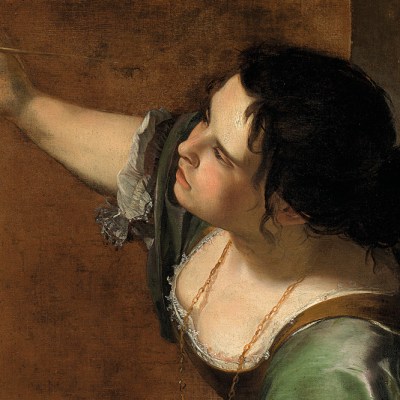From the September 2021 issue of Apollo. Preview and subscribe here.
Amid a global pandemic, the Metropolitan Museum has mounted an extraordinary exhibition celebrating the most powerful family of the Renaissance. To bring 16th-century Florence to life in New York City, objects have travelled from as far as Sydney and from all over Europe; some loans have left their home collections for the first time in modern history. ‘The Medici: Portraits and Politics, 1512–1570’ presents a chapter of Florentine history with Cosimo I de’ Medici as the central figure, and argues that the teenage duke harnessed the force of art and language to project and establish his own place, and that of the city, at the heart of European power. In the present period of lockdowns and travel restrictions, it seems almost miraculous to encounter in these galleries one masterwork after another (there are 94 objects on view, with just one loan that did not make it).
The entrance gallery declares the show’s thesis in a single object. Benvenuto Cellini’s imposing, over-life-size bronze bust of Cosimo lords over visitors. (It is one of nine objects from the Bargello, Florence, of a total of 17 from Florentine museums.) Conservation treatment prompted by the exhibition revealed original silvered eyes, a technique from ancient Greek bronze statuary that intensifies Cosimo’s bulging gaze; this discovery is so recent that it could not be illustrated in the excellent accompanying catalogue. It is almost too much to imagine the bust in its original state, gilded and silvered, the mole on Cosimo’s right cheek the sole clue that he is human and not a god. It appears inconsistently in Cosimo’s portraits, raising questions as to the occurrence of moles in portraiture.
Cosimo I de’ Medici (1546–47), Benvenuto Cellini. Museo Nazionale del Bargello, Florence. Photo: Antonio Quattrone; Su concessione del Ministero della Cultura

Six further galleries of paintings and sculpture, along with a smattering of other objects (books, medals, weapons, etc.), make visible the artistic context of the Medici court as Florence evolved from a republic to a duchy and as Cosimo consolidated his position. Groupings emphasise the importance of lineage and dynasty to individual and family identity, and the role of language in culture and power. Bronzino is the star. As court painter to Cosimo and his wife Eleonora di Toledo, he fashioned a cold, intensely elegant style of painting that came to characterise the court itself. The artist was also among the accomplished Tuscan poets who were fostered by Cosimo’s circle (one can read a poetic tribute to onions in Bronzino’s handwriting). Recent conservation has enhanced the richness of Bronzino’s portrait of Laura Battiferri – a woman and poet whose aquiline profile Bronzino conformed to resemble the great Dante. It is easy to lose oneself in Bronzino’s painted drapery, codpieces, slashed satin sleeves, all rendered with tireless precision. Encountering a red dress in the middle of a gallery – a petticoat possibly worn by Eleonora or one of her ladies – visitors confront the reality of the sumptuous clothing that Bronzino was tasked with immortalising in paint; his salary was equivalent to that of the Medici court tailor, suggesting the comparable values the court placed on what they wore in life and how they wanted to be portrayed for perpetuity.
Laura Battiferri (c. 1560), Bronzino. Museo di Palazzo Vecchio, Florence. Photo: © Musei Civici Fiorentini – Museo del Palazzo Vecchio

It took the murder of Alessandro de’ Medici, first hereditary duke of Florence, for the 17-year-old Cosimo to ascend to power (Cosimo came from a minor branch of the family). Alessandro’s father was either Lorenzo or Giulio de’ Medici, both of whose portraits are also on view; both descended from the main Medici line. Believed to have been born to a formerly enslaved African woman, Simonetta da Collevecchio, Alessandro may be the only Black person represented in these rooms. Contemporary sources refer to Alessandro’s dark complexion, though his African ancestry was never explicitly confirmed. What did questions of race have to do with his identity and legacy, and how have they informed his treatment in modern art history? (In Pontormo’s portrait of him in this show, the notable difference between the hue of Alessandro’s face and of his pale hands likely results from over-cleaning in the lower area.) Attention should be paid to images of him, for they sit squarely at the crossroads of Medici portraits and politics. In a chilling juxtaposition here, Alessandro’s portrait is chaperoned by the diminutive portrait medal depicting his killer, his cousin Lorenzino de’ Medici, who looks coolly in his victim’s direction. Lorenzino is styled as Brutus to justify the murder: tyrannicide to save Florence.
Alessandro de’ Medici (1534–35), Jacopo da Pontormo. Philadelphia Museum of Art

Carlo Rimbotti (probably 1548), Francesco Salviati. Metropolitan Museum of Art, New York

The show’s chronological starting point is 1512, the year the Medici returned to power in Florence after being ousted in 1494. The earliest work on view, dated to 1515, is the Met’s own portrait of Giuliano de’ Medici, Duke of Nemours, thought to be by the workshop of Raphael (16 objects on view come from the Met’s own holdings). The show ends in 1570, the year after Cosimo’s elevation from Duke of Florence to Grand Duke of Tuscany. His son and successor as Duke of Florence, Francesco, represented here in a full-length portrait by Alessandro Allori painted around that time, embodies Cosimo’s dynasty. Reflecting trends in Renaissance portraiture, some 10 works in the show depict women; there are more than six times as many portraits of men.
The catalyst for this exhibition about the most powerful family of the Renaissance was, perhaps surprisingly, the Met’s acquisition in 2017 of an intimate, bust-length portrait by the Florentine painter Francesco Salviati, depicting a young doctor, Carlo Rimbotti. Salviati worked alongside Bronzino during a short but significant period in their native city in the 1540s, and his varying styles – attributed by the curators to his travels around Italy – contrast sharply with Bronzino’s consistent ‘Florentine’ aesthetic. The final gallery presents works by the two artists in nearly equal number to assert their divergent approaches – Bronzino dependably pristine; Salviati, pleasingly, all over the place – which ended in the latter quitting the constraints of Cosimo’s Florence for Rome. The show closes with Salviati leaving the Medici behind; my own inclination on exiting from it was to go straight back to the beginning.
‘The Medici: Portraits and Politics, 1512–1570’ is at the Metropolitan Museum of Art, New York, until 11 October.
From the September 2021 issue of Apollo. Preview and subscribe here.



